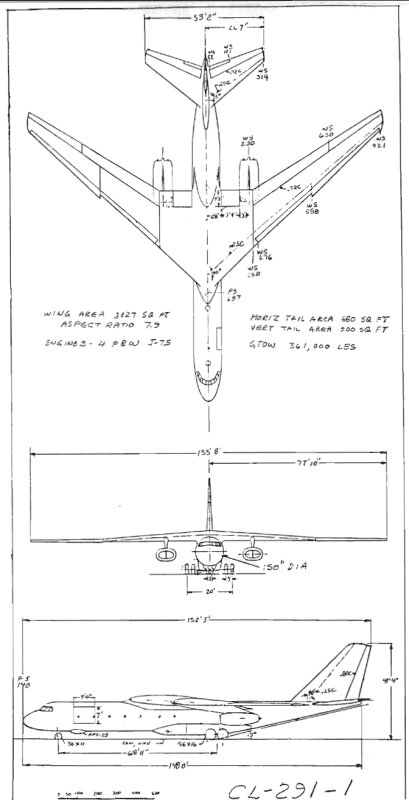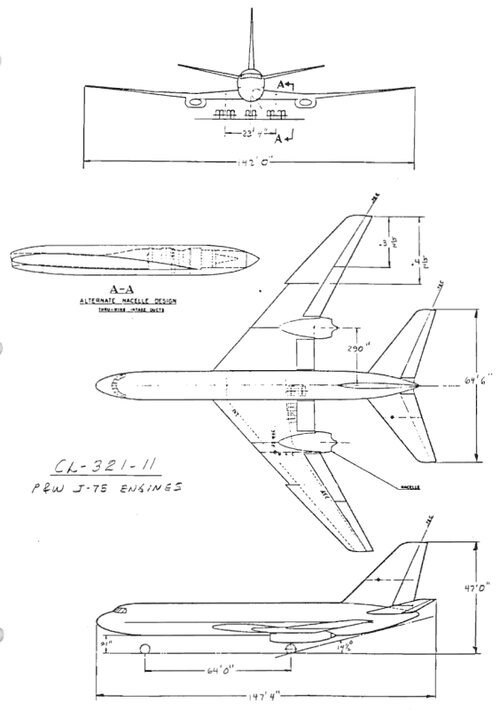You are using an out of date browser. It may not display this or other websites correctly.
You should upgrade or use an alternative browser.
You should upgrade or use an alternative browser.
USAF Tanker Competition saga
Lockheed Quits Air Force Tanker Competition, But Airbus Will Go It Alone

Lockheed Quits Air Force Tanker Competition, But Airbus Will Go It Alone
Lockheed Martin is halting its pitch of the LMXT for the Air Force KC-135 recapitalization “bridge tanker” program.
“…….An Airbus spokesperson said the company “remains committed to providing the U.S. Air Force and our warfighters with the most modern and capable tanker on the market, and will formally respond” to the KC-135 recapitalization request for information. “The A330 U.S.-MRTT is a reliable choice for the U.S. Air Force: one that will deliver affordability, proven performance and unmatched capabilities,” they added.”
FighterJock
ACCESS: Above Top Secret
- Joined
- 29 October 2007
- Messages
- 5,569
- Reaction score
- 5,873
That is sad news that Lockheed quit the tanker competition. But it is brave of Airbus to go it alone considering what happened the last time.
- Joined
- 16 April 2008
- Messages
- 9,574
- Reaction score
- 14,381
Seems a bit pointless, honestly. LM is recognizing that given the size of the bridge tanker order, a new design makes little sense, so the KC-46 will be more or less a given. So they are sensibly focusing on the Next-Generation tanker, which may be a clean-sheet airframe or even system of systems.
FighterJock
ACCESS: Above Top Secret
- Joined
- 29 October 2007
- Messages
- 5,569
- Reaction score
- 5,873
So the Next Generation Tanker is going to be a clean sheet design? It is strange that the USAF are even considering the LMXT program since both programs will be working along side each other for funding, I think that the best idea would be to axe the LMXT program and concentrate on the Next-Generation tanker.
- Joined
- 16 April 2008
- Messages
- 9,574
- Reaction score
- 14,381
So the Next Generation Tanker is going to be a clean sheet design? It is strange that the USAF are even considering the LMXT program since both programs will be working along side each other for funding, I think that the best idea would be to axe the LMXT program and concentrate on the Next-Generation tanker.
LMTX is specifically the Lockheed/Airbus A330 tanker. The bridge tanker (aka KC-135 Tanker Recapitaliztion) is the competition they were proposing it for, which now seems to be a lock for Boeing's KC-46. This is urgently needed because the KC-135s are wearing out quickly. Then Next-Generation AIr Refueling System comes in later.

Air Force Plans RFP for New Tanker in Fiscal 2025, But Is Still Building Its Acquisition Strategy
The Air Force will issue a request for proposals for its KC-135 Recapitalization Program in fiscal 2025 but still has to build a tanker acquisition strategy.
BlackBat242
OK, I changed my personal text ;)
- Joined
- 10 April 2013
- Messages
- 1,450
- Reaction score
- 4,171
All this (and indeed the earlier KC-45 vs KC-46 competition) just reminds me of the 1950s USAF tanker competition - launched in 5 May 1954, with Boeing, Lockheed, Douglas, Convair, Martin, and Republic invited to offer. Boeing had already been working on a tanker since April 1952 - planned for first flight in 2 years, so they had a "leg up" on the competition.* The 367-80 developmental version's first flight was in July 1954.
However, in Aug. 1954 the USAF had ordered 29 "interim tankers" (KC-135A, first flight of production example Aug. 1956) from Boeing as a "stopgap". Less than two weeks later another 88 were ordered.
The competition was won in Feb. 1955 by Lockheed, with a design that was larger than Boeing's KC-135 (initially the CL-291 design, eventually the CL-321). However, in the same announcement as the "award to Lockheed" the USAF announced an order for 169 more KC-135As (now totalling 286).
Not much later, the USAF officially cancelled the Lockheed development in favor of more KC-135As. Note that the Lockheed tanker was derived from the planned L-193 airliner that has been discussed recently). Note the resemblance of the CL-291 to the C-141 (designed 1960, first flight 1963) in the main wing location and mounting.
KC-135 engines: JT3s (civilian J57, 10,000 lb.s.t. [later 12,000-14,000 with water injection, then 17,000 lb.s.t. TF33 {turbofan J57} after 1960])
CL-321's engines: J75 (15,000-17,000 lb.s.t.) (perhaps later the 21,000 lb.s.t. TF33 developments?).
KC-135:
Wingspan: 130 feet, 10 inches (39.88 meters)
Length: 136 feet, 3 inches (41.53 meters)
Height: 41 feet, 8 inches (12.7 meters)
Gross weight 297,000 lb
CL-321-11:
Wingspan: 142 feet, 0 inches (43.28 meters)
Length: 147 feet, 4 inches (44.91 meters)
Height: 47 feet, 0 inches (14.33 meters)
Gross weight (CL-291-1) 361,000 lb


* The 367-80 developmental version first flight was in July 1954 (Like its sibling, the commercial Boeing 707, the KC-135 was derived from the 367-80 jet transport "proof of concept" demonstrator, which was commonly called the "Dash-80". The KC-135 is similar in appearance to the 707, but has a narrower fuselage and is shorter than the 707. The KC-135 predates the 707, and is structurally quite different from the civilian airliner.).
However, in Aug. 1954 the USAF had ordered 29 "interim tankers" (KC-135A, first flight of production example Aug. 1956) from Boeing as a "stopgap". Less than two weeks later another 88 were ordered.
The competition was won in Feb. 1955 by Lockheed, with a design that was larger than Boeing's KC-135 (initially the CL-291 design, eventually the CL-321). However, in the same announcement as the "award to Lockheed" the USAF announced an order for 169 more KC-135As (now totalling 286).
Not much later, the USAF officially cancelled the Lockheed development in favor of more KC-135As. Note that the Lockheed tanker was derived from the planned L-193 airliner that has been discussed recently). Note the resemblance of the CL-291 to the C-141 (designed 1960, first flight 1963) in the main wing location and mounting.
KC-135 engines: JT3s (civilian J57, 10,000 lb.s.t. [later 12,000-14,000 with water injection, then 17,000 lb.s.t. TF33 {turbofan J57} after 1960])
CL-321's engines: J75 (15,000-17,000 lb.s.t.) (perhaps later the 21,000 lb.s.t. TF33 developments?).
KC-135:
Wingspan: 130 feet, 10 inches (39.88 meters)
Length: 136 feet, 3 inches (41.53 meters)
Height: 41 feet, 8 inches (12.7 meters)
Gross weight 297,000 lb
CL-321-11:
Wingspan: 142 feet, 0 inches (43.28 meters)
Length: 147 feet, 4 inches (44.91 meters)
Height: 47 feet, 0 inches (14.33 meters)
Gross weight (CL-291-1) 361,000 lb


* The 367-80 developmental version first flight was in July 1954 (Like its sibling, the commercial Boeing 707, the KC-135 was derived from the 367-80 jet transport "proof of concept" demonstrator, which was commonly called the "Dash-80". The KC-135 is similar in appearance to the 707, but has a narrower fuselage and is shorter than the 707. The KC-135 predates the 707, and is structurally quite different from the civilian airliner.).
Last edited:
FighterJock
ACCESS: Above Top Secret
- Joined
- 29 October 2007
- Messages
- 5,569
- Reaction score
- 5,873
I did not realise that about the KC-135 being different from the 707, I had thought that the two had a common ancestor design.
BlackBat242
OK, I changed my personal text ;)
- Joined
- 10 April 2013
- Messages
- 1,450
- Reaction score
- 4,171
They did... but that ancestor was the diameter of the KC-135... adjusting that airframe to meet the requirements of the airlines meant increasing the fuselage diameter (the 367-80 prototype could only fit 5 seats abreast - one side 3, the other 2, while the airlines insisted on 3 + 3 abreast) and a longer fuselage to fit more rows of seats.I did not realise that about the KC-135 being different from the 707, I had thought that the two had a common ancestor design.
All of that meant that the structural design of the fuselage had to be heavier & stronger to accommodate the stresses of a longer & heavier fuselage (the "walls" of the "tube" had to have a deeper thickness to provide that strength).
The KC-135A, while it had a higher max take-off weight, fit the heavier load into a smaller and shorter fuselage - the extra fuel tankage replaced the belly cargo area, etc - which meant more structure changes.
Great and informative read:

 leehamnews.com
leehamnews.com

Pontifications: Airbus ponders A330neo MRTT, Boeing ponders KC-46A re-engine - Leeham News and Analysis
By Scott Hamilton Nov. 28, 2023, © Leeham News: In a reversal of intent, the airplane that Airbus may submit to the US Air Force for the next round of aerial tanker procurement may be based on the... Read More
jsport
what do you know about surfing Major? you're from-
- Joined
- 27 July 2011
- Messages
- 7,711
- Reaction score
- 5,711

TRANSCOM looking for more tankers to move fuel in shallower water between Pacific island chains - Breaking Defense
A congressionally authorized program to recruit private ships to assist the federal government was expanded at US Transportation Command's request.
NGAS competition will be supported by a new engine:
 aviationweek.com
aviationweek.com
Interesting to see that NGAS will probably have 3 to 4 engines.
Service officials recently confirmed to Aviation Week that the Air Force has reached out to industry about potentially starting a new engine program with the interim plan to re-engine the Boeing C-17 Globemaster III fleet, with potential applications for NGAS and the Next Generation Airlift program.
Air Mobility Command (AMC), which operates the C-17 and is driving the requirements for next-generation programs, would like a more fuel-efficient powerplant for the airlifter. But engine makers have not produced a new powerplant in the C-17’s thrust range—the Globemaster III uses the same PW2000 designed for the Boeing 757.
USAF Surveying Industry For Future Tanker Engines | Aviation Week Network
The U.S. Air Force is surveying industry for multiple categories of propulsion to power future tankers.
Interesting to see that NGAS will probably have 3 to 4 engines.
jsport
what do you know about surfing Major? you're from-
- Joined
- 27 July 2011
- Messages
- 7,711
- Reaction score
- 5,711

Air Force RFI targets engine options for NGAS tankers - Breaking Defense
Responses will help shape analysis for the tanker program, known as the Next Generation Air refueling System.
- Joined
- 6 November 2010
- Messages
- 5,241
- Reaction score
- 5,465
@TomcatViP Cryptic - please elaborate?
More on this:

 www.airandspaceforces.com
www.airandspaceforces.com

Minihan: New Mobility Systems Needed to Go with New Fighters and Bombers
Mobility aircraft tech needs to keep up with strike aircraft, and new Air Force organizations will make that happen, Gen. Mike Minihan said.
- Joined
- 9 October 2009
- Messages
- 21,927
- Reaction score
- 13,526

KC-X - Wikipedia
BlackBat242
OK, I changed my personal text ;)
- Joined
- 10 April 2013
- Messages
- 1,450
- Reaction score
- 4,171
They did... but that ancestor was the diameter of the KC-135... adjusting that airframe to meet the requirements of the airlines meant increasing the fuselage diameter (the 367-80 prototype could only fit 5 seats abreast - one side 3, the other 2, while the airlines insisted on 3 + 3 abreast) and a longer fuselage to fit more rows of seats.
Let me correct this, just for completeness.
The 367-80 had a fuselage diameter of 132".
The KC-135A had a fuselage diameter of 144".
The B707 had a fuselage diameter of 148".
Last edited:
